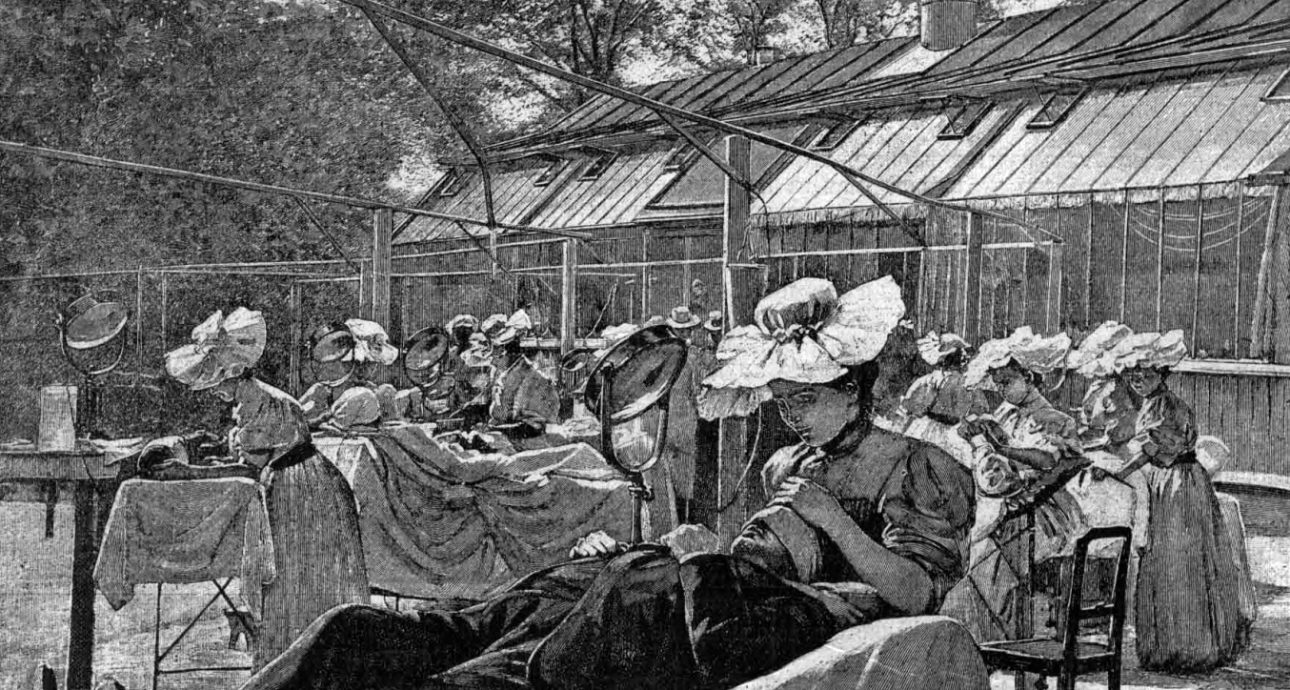
Nobel Knows: What Harmful Inventions Received the Famous Award
In March 1888, Alfred Nobel read his own obituary in a newspaper. The journalists mistook his deceased brother for him and were quick to inform the public about the death of the ‘merchant of death.’ Nobel was upset for his brother and about the mistake of the journalists, but especially — about the manner of the obituary. Then, he decided to leave behind something except dynamite and arranged for the establishment of the Nobel Prize.
“All of my remaining realizable assets are to be disbursed as follows: the capital, converted to safe securities by my executors, is to constitute a fund, the interest on which is to be distributed annually as prizes to those who, during the preceding year, have conferred the greatest benefit to humankind,” Nobel wrote in his will.
In over a hundred years the Nobel Committee has several times unwillingly violated the will of its founder and by mistake has given the prize for the inventions that were not that beneficial.
Miracle Lamps
Niels Ryberg Finsen from Denmark had weak health since he was a child. When he grew up, he noticed that he felt much better after walks in the sun.
At the university, he started studying the healing power of ultraviolet rays. He became popular in the scientific world thanks to his innovations in treating smallpox, but later he started researching lupus vulgaris, or cutaneous tuberculosis (not to be confused with systemic lupus erythematosus, which is an autoimmune disease). In 1885, he bought powerful carbon arc lamps that played a cruel trick on him.
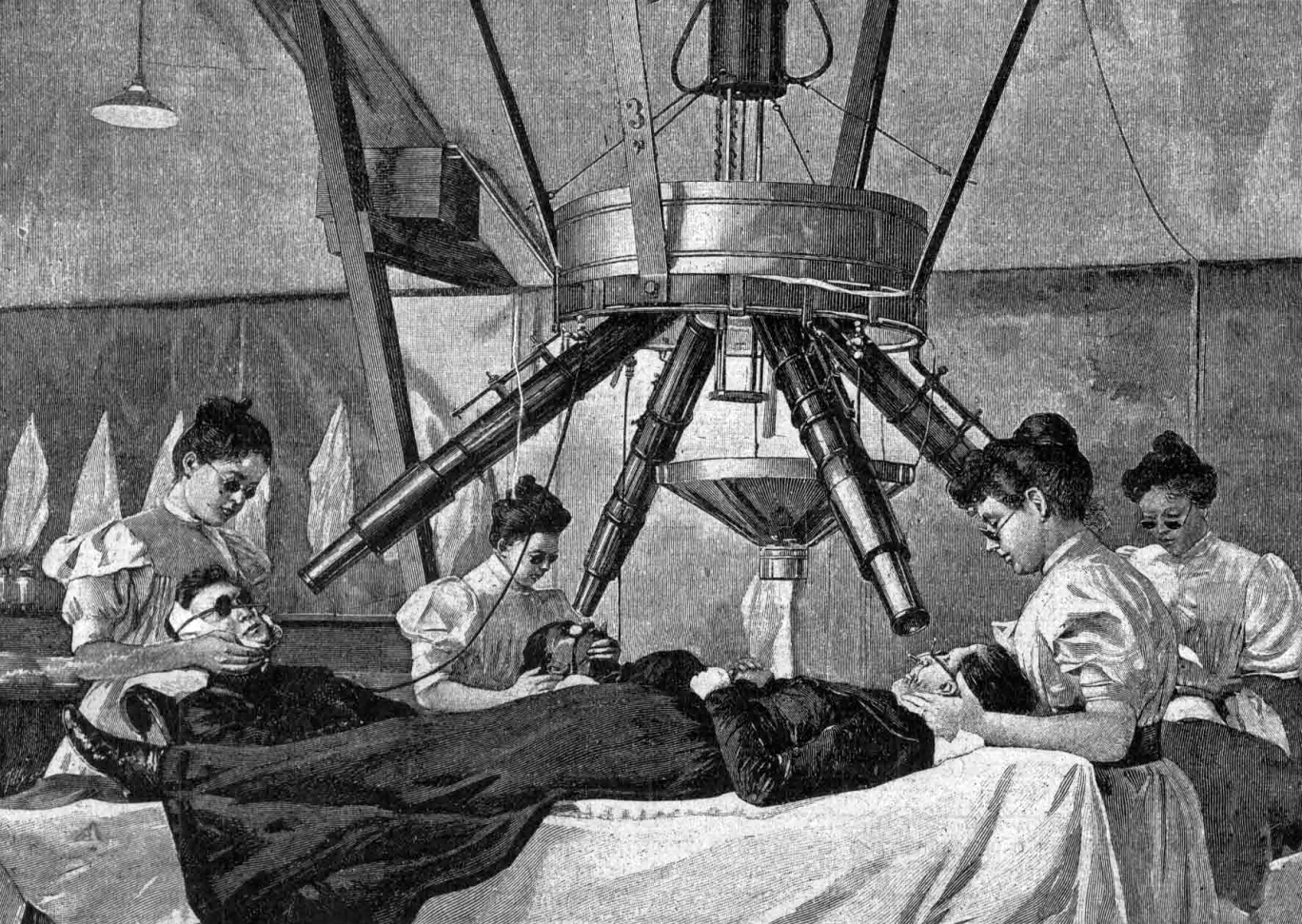
Treatment with electric light in professor Finsen’s institute in Copenhagen, 1901. Image: E. Tilly — Niva magazine, 18 vol., 1901
Finsen exposed lupus patients to lamp light for two hours every day. As a result, they improved after several months, and many even got rid of ugly scars and wounds and recovered. After a year, Finsen was the head of the light therapy institute named after him. Half of the patients who were treated there fully recovered, and the remaining half felt much better.
The outstanding results were noticed, and in 1903 Finsen received a Nobel Prize in acknowledgement of his achievements in treatment of illnesses, especially lupus.
Later, it turned out that the lenses that Finsen used didn’t let ultraviolet light through at all. It wasn’t the light that had the therapeutic effect, but the singlet oxygen that appeared because of the sparkling carbon rods of the lamp. Nevertheless, light therapy that Finsen invented is indeed effective for some illnesses.
Fighting Fire with Fire
In the early 20th century, syphilis was an untreatable disease. In its latest stages it caused complications that affected the brain, and the patients developed progressive paralysis — a psychoorganic disease that after several years resulted in death. One fifth of the patients in mental hospitals had syphilis, and, as a result, progressive paralysis.
Julius Wagner-Jauregg worked in the psychiatric hospital and was interested in physiological reasons of mental illnesses. He noticed that some of the patients who had progressive paralysis survived. Wagner-Jauregg examined them, and it turned out that all of them also had severe fever when they had progressive paralysis.
The doctor started looking for ways to cause a severe fever in patients. At first, he gave the patients tuberculosis, and then he treated it with tuberculin. But the tuberculosis fever was short and weak, so it wasn’t good for treating progressive paralysis. Besides, some patients died because tuberculin didn’t help them.
The breakthrough in the research happened in 1917, when quinine was discovered for the treatment of malaria: malaria fever was severe and long enough. Wagner-Jauregg gave patients malaria, and then treated them with quinine.
85% of the patients considerably improved, but the death rate remained high. Later, the doctor isolated a weakened strain of malaria pathogens and decreased the danger of malariatherapy. And nonetheless, he was not always able to control the progress of malaria, and some patients died. However, at the time it was considered an acceptable risk.
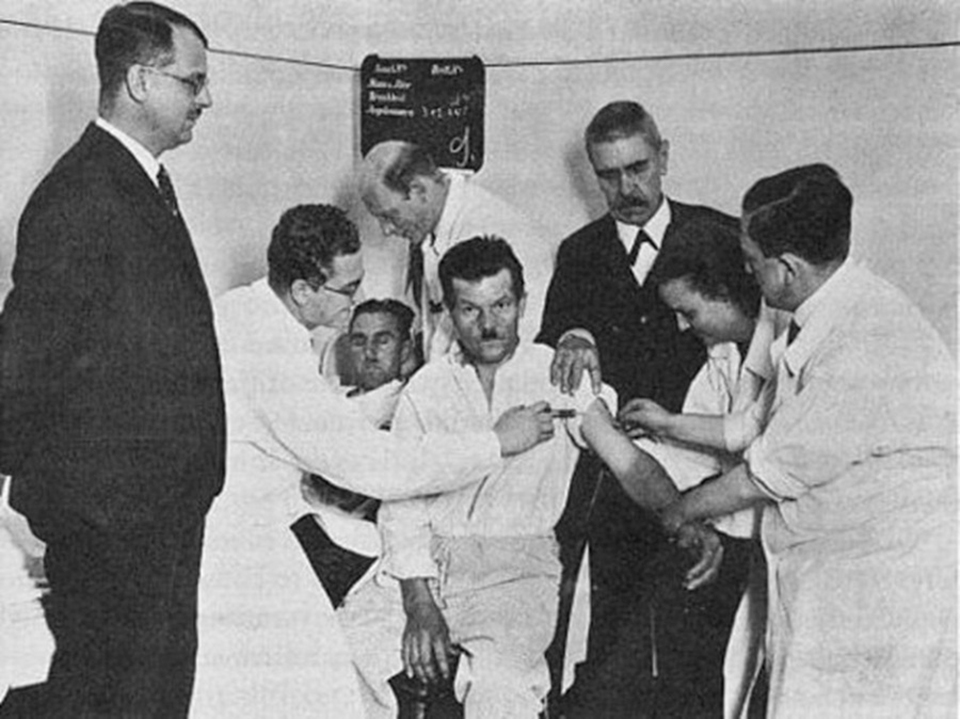
Wagner-Jauregg (on the right in the center in the black suit) observed the blood transfusion from a malaria patient to a neurosyphilis patient (in the middle), 1934. Photo: wikimedia.org
In 1927, Wagner-Jauregg received a Nobel Prize for the “discovery of the therapeutic value of the malaria inoculation in the treatment of dementia paralytica”.
His discovery remains controversial: was it that the malaria stimulated the immune system, or high body temperature created an unfavorable environment for syphilis pathogens, or both worked simultaneously. We were saved from mass malariatherapy by the invention of penicillin that helps cure syphilis in the early stages before the patients start developing progressive paralysis.
Get Ready for Complications
In 1948, Paul Mueller received a Nobel Prize for discovering the dangerous properties of one of the most poisonous substances on earth — dichlorodiphenyltrichloroethane, known as DDT. Mueller established that DDT can be used as a powerful insecticide to fight locusts, mosquitoes, and other pests.
DDT was better than all known insecticides: it was considered to have low-toxicity, but was deadly for all insects without exceptions. It was rather simple and cheap to produce and easy to spray over entire fields. A one-time dose of 500-700mg was considered absolutely harmless for a man, that’s why the substance was sprayed even in residential areas.
DDT stopped the typhus epidemic in Napoli, malaria epidemics in India, Greece, and Italy, increased harvests and gave hope that hunger could be overcome in many countries. During the times that it was widely used, 4 million tons of DDT was sprayed all over the world. Its benefits were obvious, and the dangerous consequences came much later.
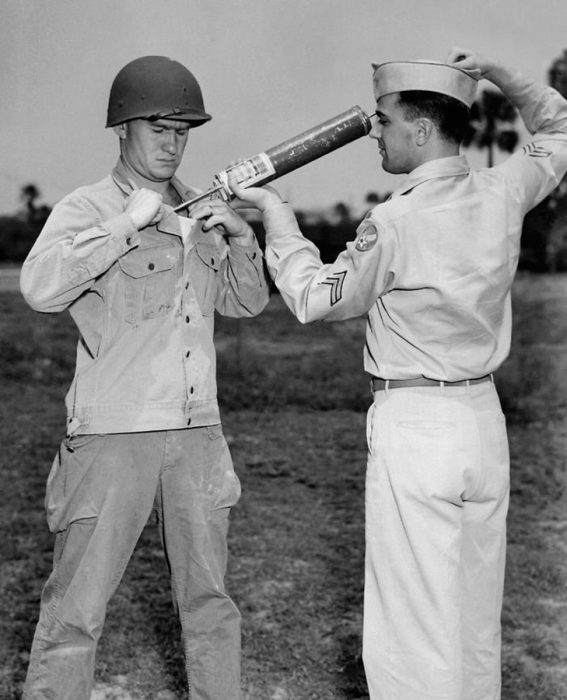
American soldier shows how to manually spray DDT to fight lice. Photo: wikimedia.org
In the 1950s, the first studies appeared that proved that DDT accumulates in the environment and animal bodies and causes irreversible changes. It was especially concerning that moving up the food chain DDT increased in concentration and could potentially reach doses deadly for humans. By 1970, all developed countries prohibited the use of DDT within their borders.
Millions of tons of the poisonous substance continue to travel the world in the bodies of birds and animals, accumulating in the soil and water, concentrating in plants and ending up in the bodies of animals again. The traces of DDT are now found even in the Arctic. This process will continue for several more generations: the period of DDT decay is 180 years, and we still don’t know about all consequences of its use.
The Secret of Obedience
Rosemary Kennedy — the elder sister of the US president — was a difficult child. In early childhood she made her mother happy with her complaisant character, gentleness, and obedience. With time, the girl started having developmental delays, she could hardly remember anything new, and couldn’t learn her letters. When Rosemary noticed that she was different from her peers, her character also deteriorated: she became irritable and explosive.
Teachers at the private school taught her to read and write, behave in public and communicate with peers, but they couldn’t do anything about her bouts of anger and irritation.
In 1941, a disappointed Joseph Kennedy, Sr. gave his permission for the medical procedure that according to the doctors could calm Rosemary and make her more manageable. Doctor Walter Freeman pierced the soft bones above Rosemary’s eye and dissected her brain.

Rosemary before the surgery (later 1930s). Photo: wikimedia.org
From a difficult teenager, Rosemary turned into a disabled person who couldn’t control or take care of herself. She became one of the thousands victims of lobotomy, while the inventor of this procedure was awarded with a Nobel Prize.
Freeman considered lobotomy almost a cure-all. It was he who nominated his overseas colleague and mentor, the inventor of the lobotomy, Egas Moniz, for the prize. And Moniz received it in 1949.
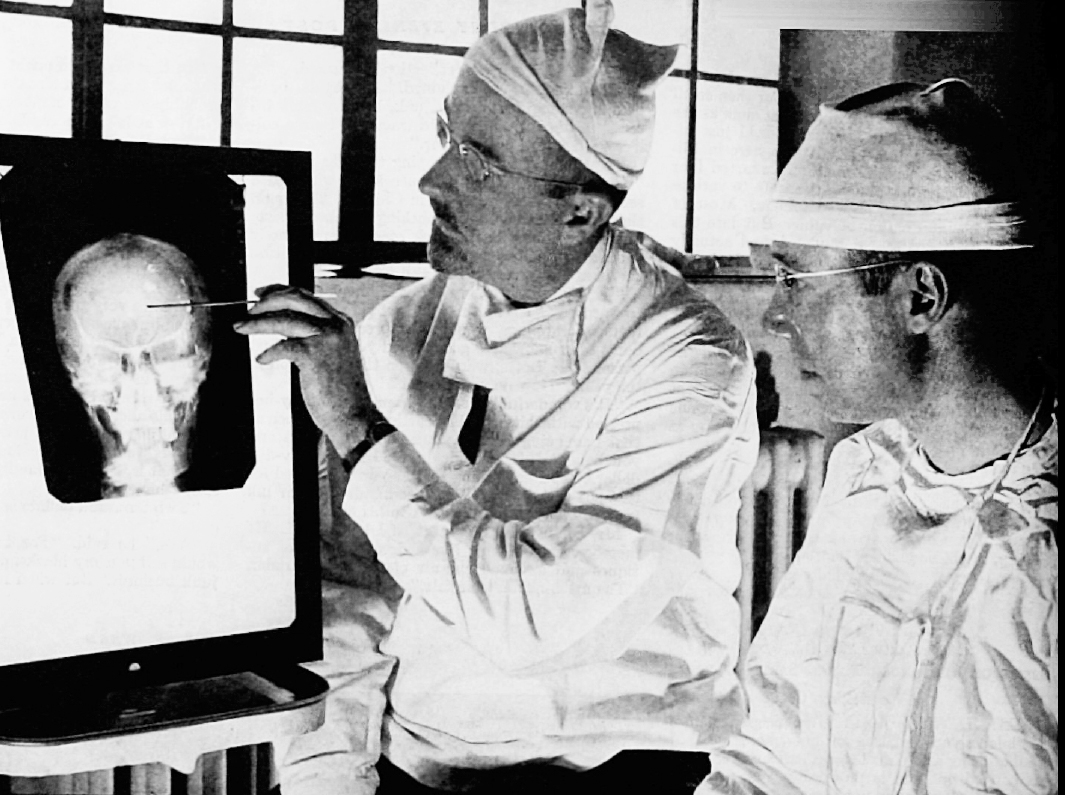
Walter Freeman (L) and Doctor James Watts study an X-ray before the surgery. Photo: Harris A Ewing — Saturday Evening Post, 1941.
Freeman wasn’t even a surgeon (only a neuropathologist), but he traveled around America on his ‘lobotomobile’ and performed 25 surgeries a day. He didn’t limit himself to violent schizophrenics and prescribed lobotomy as a remedy for headaches and bad character. He called the effect caused by lobotomy a ‘surgically induced childhood’ and thought that if a troubled teen or a hysterical wife turned into a vegetable after the surgery, this is a favorable outcome, as they wouldn’t trouble anybody anymore.
In the 1950s, lobotomy was prohibited in many countries, including the USSR.
Time Will Show
Looking down from the height of scientific progress it is easy for us to look at the mistakes of our predecessors and be surprised with their short-sightedness. However, it is impossible to predict the development of science.
Recently, biologists received the Nobel Prize for discovering the mechanisms of autophagy, physicists — for studying phase transitions of matter, chemists — for synthesizing molecular machines, and economists — for developing contract theory. It is possible that in some 50-100 years some of these discoveries will prove to be wrong, useless, or even harmful. But this is how science develops: by trial and error.
New and best




